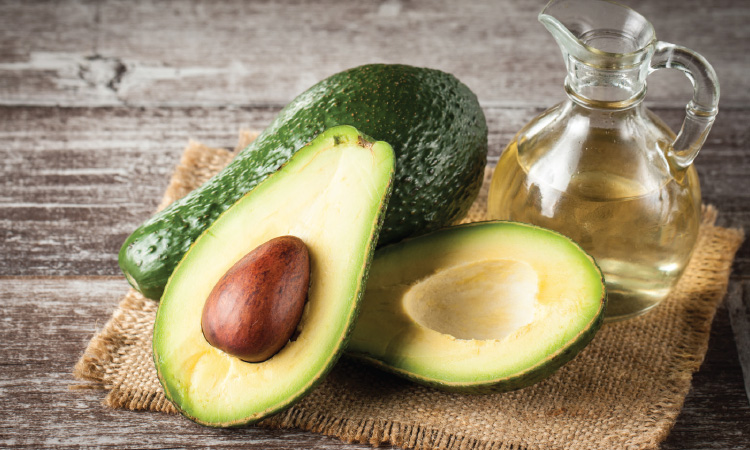Diet and the gut microbiome
Dr Pran Yoganathan
MBChB. (Otago), FRACP
1300 580 239
Suite 25, 7-9 Barwell Avenue
Castle Hill NSW 2154
The genesis of our gut microbiome
Microbial colonization of the human gut begins at birth. The infant’s intestines are sterile or contain a very low level of microbes at birth, but the gut is quickly colonized during and after delivery.
As a neonate passes through the birth canal, he or she is exposed to the microbial population of the mother’s vagina. This process influences the development of an infant’s intestinal microbiota, which show similarities to the vaginal microbiota of the mother. Infants who were delivered through caesarean section showed reduced microbial numbers in the gut at one month when compared with those who were delivered vaginally, although these differences do not remain detectable at six months of age.
During the first year of life, the composition of the gut microbiota is relatively simple and shows wide interindividual variations. The infant’s gut microbiota undergo a succession of changes that are correlated with a shift in feeding mode from breast or formula feeding to weaning and the introduction of solid food.
Despite the relative similarities of the gut microbiota in mothers and their offspring, the microbiome is also influenced by numerous external and internal, host-related factors. External factors include the microbial load of the immediate environment, type of food eaten, and feeding habits, in addition to the composition of the maternal microbiota.
Microbiome and disease
The majority of the microbiome reside within the more distal parts of the digestive tract. They contribute to host health through generation of vitamins and essential amino acids, as well as generation of important metabolic by-products from dietary components left undigested by the small intestine.
Studies examining the composition and role of the intestinal microbiome in different disease states have uncovered associations with inflammatory bowel diseases (IBD), irritable bowel syndrome (IBS), inflammatory skin diseases such as psoriasis and atopic dermatitis, autoimmune arthritis, Type 2 Diabetes (T2DM), fatty liver, obesity, atherosclerosis and mood disorders.
Microbiol colonization of the human gut begins at birth.

IBD patients tend to have less bacterial diversity as well as lower numbers of Bacteroides and Firmicutes which together may contribute to reduced concentrations of microbial-derived butyrate. Butyrate and other short chain fatty acids (SCFAs) are thought to have a direct anti-inflammatory effect in the gut(1).
Obesity has been characterised by an altered intestinal Bacteroides: Firmicutes ratio, with greater relative abundance of Firmicutes. A recent study also demonstrated that gut bacteria can produce significant amounts of amyloid and lipopolysaccharides, which are key players in the pathogenesis of Alzheimer’s disease(2).
These observations illustrate the important role of microorganisms in human health and suggest that manipulating them may influence disease activity. While the microbiome of a healthy individual is relatively stable, gut microbial dynamics can certainly be influenced by host lifestyle and dietary choices.
Diet and microbiota
Protein
The effects of dietary protein on the gut microbiota were first described in 1977. A study demonstrated lower counts of Bifdobacterium adolescentis and increased counts of Bacteroides and Clostridia in subjects consuming a high beef diet when compared to subjects consuming a meatless diet(3).
Consumption of whey and pea protein extract has been reported to increase gut-commensal Bifdobacterium and Lactobacillus, while whey additionally decreases the pathogenic Bacteroides fragilis and Clostridium perfringens. Pea protein has also been observed to increase intestinal SCFA levels, which are considered anti-inflammatory and important for maintenance of the mucosal barrier(4). On the contrary, counts of bile-tolerant anaerobes such as Bacteroides, Alistipes and Bilophila were noted to increase with consumption of animal-based protein.
Although high protein/low carbohydrate intake may promote greater relative weight loss, this dietary pattern may pose a detrimental effect to health. One study found that subjects with a high protein/low carbohydrate diet have reduced Roseburia and Eubacterium rectale in their gut microbiota and a decreased proportion of the butyrate in their faeces(5). This is significant in the case of the popular “Ketogenic Diet”; very quickly the diet becomes reduced and limited to a set of foods which are low in carb yet also low in fibre, thus potentially eradicating many healthy bacteria strains from one’s digestive tract.
Health promoting fats are crucial in alleviating risk of chronic disease.

Fats
Consumption of high saturated and trans-fat diets is thought to increase the risk of cardiovascular disease through upregulation of LDL-cholesterol. On the other hand health-promoting fats, such as mono and polyunsaturated fats, are crucial in alleviating risk of chronic disease. The typical Western diet is both high in saturated and trans-fats while low in mono and polyunsaturated fats, therefore predisposing regular consumers to many health problems.
Studies in rats have shown that intake of a high-fat diet results in considerably less Lactobacillus intestinalis and disproportionately more propionate and acetate producing species, including Clostridiales, Bacteroides, and Enterobacteriales. Furthermore, the abundance of Lactobacillus intestinalis is negatively correlated with rat fat mass and body weight(6). These results indicate that gut microbiota may promote metabolic inflammation through Toll Like Receptor signalling upon challenge with a diet rich in saturated lipids.
Carbohydrates
Carbohydrates are possibly the most well studied dietary component for their ability to modify the gut microbiome. Carbohydrates exist in two varieties: digestible and non-digestible.
Digestible carbohydrates
These are enzymatically degraded in the small intestine and include starches and sugars, such as glucose, fructose, sucrose, and lactose. Upon degradation, these compounds release glucose into the bloodstream and stimulate an insulin response.
Human subjects fed high levels of glucose, fructose, and sucrose in the form of date fruits had increased relative abundance of Bifdobacteria, with reduced Bacteroides. In a separate study, the addition of lactose to the diet replicated these same bacterial shifts while also decreasing Clostridia species. Notably, many Clostridium cluster species have been associated with irritable bowel syndrome.
Lactose supplementation has additionally been observed to increase the faecal concentration of beneficial SCFAs. These findings are quite unexpected given that lactose is commonly thought of as a potential gastrointestinal irritant (e.g. lactose intolerance).
Artificial sweeteners were originally marketed as a health-conscious, no-calorie food option that could be used to replace natural sugar. Recent evidence seems to suggest that, contrary to popular belief, artificial sweeteners may actually be unhealthier to consume than natural sugars.
Non-digestible carbohydrates
In contrast to digestible carbohydrates, non-digestible carbohydrates such as fibre and resistant starch are not enzymatically degraded in the small intestine. Rather, they travel to the large intestine where they undergo fermentation by resident microorganisms. Accordingly, dietary fibre is a good source of “microbiota accessible carbohydrates” (MACs), which can be utilized by microbes to provide the host with energy and a carbon source. In the process, they are able to modify the intestinal environment. This property of fibres warrants their additional designation as prebiotics, which by definition are non-digestible dietary components that benefit host health via selective stimulation of the growth and/or activity of certain microorganisms.
Sources of prebiotics include soybeans, inulins, unrefined wheat and barley, raw oats, and non-digestible oligosaccharides such as fructans, polydextrose, fructooligosaccharides (FOS), galactooligosaccharides (GOS), xylooligosaccharides (XOS), and arabinooligosaccharides (AOS).
A diet that is low in these substances has been shown to reduce total bacterial abundance. On the other hand, high intake of these carbohydrates in obese subjects resulted in an increase in microbiota gene richness. The beneficial effect of prebiotics on immune and metabolic function in the gut is thought to involve increased production of SCFAs and strengthening of gastrointestinal-associated lymphoid tissue (GALT) from fibre fermentation.
Fruits and vegetables are rich in polyphenol content.

Polyphenols
Dietary polyphenols are actively studied for their antioxidant properties. Common foods with rich polyphenol content include fruits, seeds, vegetables, tea, cocoa products and wine.
The beneficial Bifidobacterium and Lactobacillus are increased in those consuming high levels of these foods. Relative abundance of Bacteroides also was reported to increase in subjects consuming red wine polyphenols.
Benefits such as immune-modulation, cancer prevention, and inflammatory bowel disease management have been recorded. In terms of further health benefits, consumption of cocoa derived polyphenols has been associated with significant increases in plasma HDL and significant reductions in plasma triacylglycerol and C-reactive protein concentrations.
Studies examining the antibacterial activity of fruit polyphenols found high sensitivity to these compounds in the enteropathogens Staphylococcus aureus and Salmonella typhimurium. Moreover, reductions in pathogenic Clostridium species (C. perfringens and C. histolyticum) have been noted after consumption of fruit, seed, wine, and tea polyphenols.
Prebiotics, probiotics and synbiotics
Probiotics are live microorganisms that, when given in sufficient amounts, are expected to confer a health benefit on the host. In general, probiotics have been shown to have beneficial effects on human health in a range of clinical studies. However, it is difficult to compare effectiveness between these studies because key variables are not examined in a standardized way. This makes it difficult to draw definitive conclusions. Nevertheless, the outlook is optimistic as there appears to be a trend towards benefit. The significant advancement in our understanding of the role of microbiota in disease states has inspired the development of next generation of probiotics, including genetically engineered strains that are more targeted and disease specific.
Prebiotic is “a nondigestible compound that, through its metabolization by microorganisms in the gut, modulates composition and/or activity of the gut microbiota thus conferring a beneficial physiological effect on the host.”
There is also a growing interest in Synbiotics, which are in essence a combination of a prebiotic and a probiotic. Synbiotics are meant to enhance the efficacy of a probiotic by including a prebiotic that is thought to specifically support the growth of the probiotic bacteria or, alternately, has a favourable effect on the overall gut microbial community. While in theory this appears to be a reasonable strategy, overall the clinical data are sparse and don’t yet show a definitive advantage over probiotics alone. This will likely change as we improve our current generation of pro and prebiotics.
The currently available pre-, pro- and synbiotics only represent the tip of the iceberg. The therapeutic implications of the microbiome are yet to be fully realized, so hold tight.
Summary
The gut microbiome is considered to be our second genome. One such important environmental factor is diet. Studies in the last few years have linked dietary patterns to microbiome composition.
Switching from a Western type diet (animal based) to a traditional African diet (plant based) for a period as short as a few weeks can cause significant changes in the function of the gut microbiome in healthy individuals and at risk groups for colorectal cancer.
Therefore can food be used as a therapeutic intervention? A vast amount of data is emerging on the effects of diet-dependent changes in the microbiota on weight and metabolism, immune function and even cognitive ability. The review of the literature suggests that diet can indeed modify intestinal microbiomes which can have a positive impact on overall health. We are starting to better understand the interplay between genes, phenotype and the microbiome to one day pave the way for “personalised nutrition”.
Of interest to gastroenterologists is the relationship between diet and various digestive diseases such as colorectal cancer and polyps, inflammatory bowel disease, gastrointestinal infections, malnutrition and obesity. Additionally, of interest is the links to disorders outside of the GI tract, such as diabetes and allergic, autoimmune, neuropsychiatric, kidney and bone diseases.
We are also beginning to realize that there are profound individual variations as to how a person and their microbiome responds to dietary interventions. The future will involve personalized dietary interventions designer prebiotics, probiotics, synbiotics and more.
References
- Lucas et al. The human gastrointestinal tract and oral microbiota in inflammatory bowel disease: a state of the science review. APMIS. 2017
- Pistollato et al. Role of gut microbiota and nutrients in amyloid formation and pathogenesis of Alzheimer disease. Nutrition Rev. 2016; 74:624–34.
- Hentges et al. Effect of a high-beef diet on the faecal bacterial fora of humans. Cancer Res. 1977; 37:568–71.
- Kim et al. Gut microbiota-derived short-chain fatty acids, T cells, and inflammation. Immune Netw. 2014;14:277
- Russell et al. High-protein, reduced-carbohydrate weight-loss diets promote metabolite profiles likely to be detrimental to colonic health. Am J Clin Nutr. 2011;93:1062–72
- Lecomte et al. Changes in gut microbiota in rats fed a high fat diet correlate with obesity-associated metabolic parameters. PLoS ONE. 2015;10:e0126931
- Diagrams and excerpts taken from – Singh et al. J Transl Med (2017) 15:73 DOI 10.1186/s12967-017-1175






